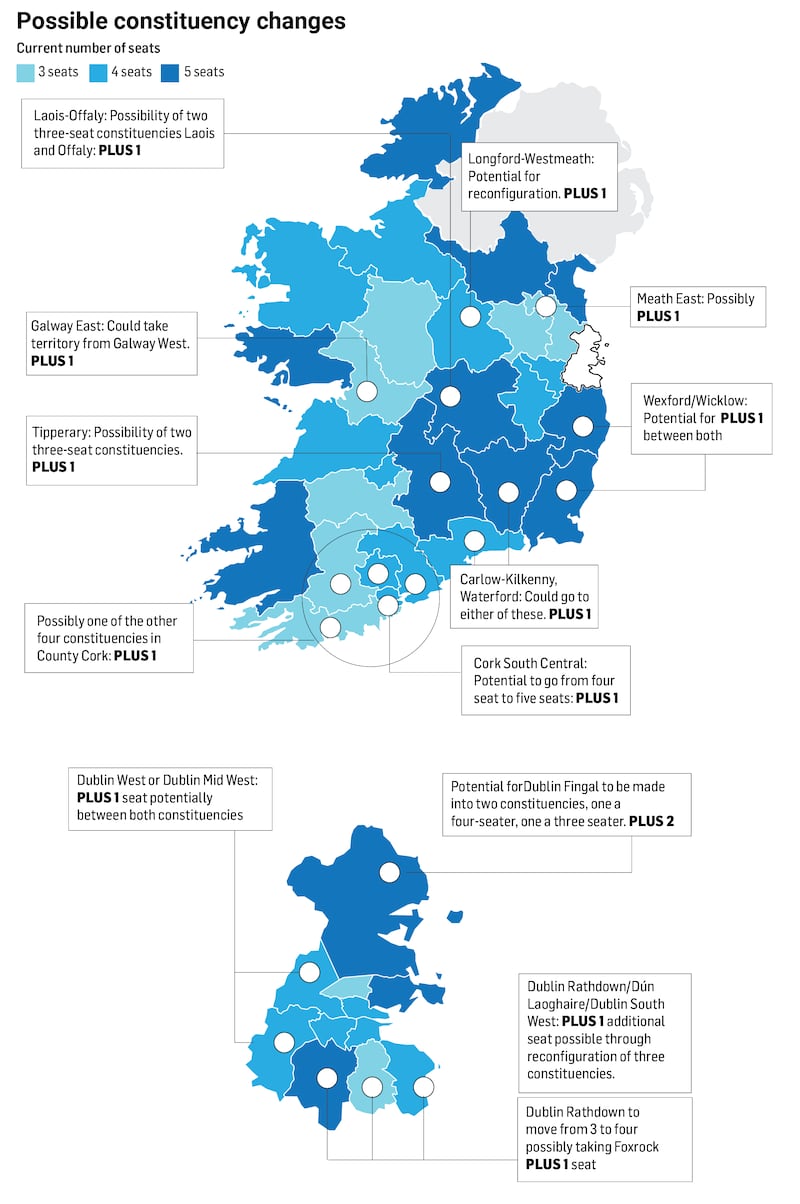Ireland’s electoral map is about to be redrawn by the Electoral Commission’s constituency review. Hugely anticipated in political circles, there will be at least 11 more TDs (though it could be as many as 21) in the next Dáil to reflect the population growing to 5.15 million people.
The nitty gritty of where the lines end up on the map, and how many TDs are allocated to individual constituencies, is the subject of fevered anticipation among TDs and would-be-deputies. Political fortunes can rise and fall on such details.
Here are five things to watch out for after the review is published on Wednesday:
The winners and losers
Politicians and parties will be publicly bullish on their chances regardless of the cards they are dealt but there will be good and bad news. Wicklow is a prime example of a place that could provide both. Too big for the current five-seat arrangement, it is in line to get another seat. However, six-seat constituencies are not permitted under the terms of the review. Wicklow could be split it into two three-seaters. This would cause havoc for many of the five sitting TDs – Ministers Stephen Donnelly and Simon Harris among them – all of whom are based in the northeast of the county. This could potentially leave them scrapping for three seats in a group of death. On the flip side it would be open season for candidates to chase three seats in a new constituency in the south of the county.
RM Block
Constituency size matters
The review can only create three-, four- and five-seat constituencies. There will likely be a proliferation of three-seaters in places that should in theory be a single six-seat constituency – think Donegal, Tipperary and Wexford. The larger parties – Sinn Féin, Fianna Fáil and Fine Gael – may be happy enough with this arrangement. Smaller parties and independents could be squeezed out in three-seat constituencies. On the flip side if there are more five-seaters they could benefit.

‘A battle between maths and geography’
Commission chief executive Art O’Leary has described the review as “a battle between maths and geography”. Nowhere is this more evident than in the case of the current four-seat Sligo-Leitrim constituency. Sitting TD Marc MacSharry has previously called it an “absurd patchwork” given it includes parts of Donegal and Roscommon. The commission aims to avoid breaching county boundaries “as far as practicable” but some will be unavoidable, not least in the northwest.
Anyone for a referendum?
The Constitution currently says there must be one TD for every 20,000 to 30,000 people. The commission is likely to research the issue in the future given that two TDs would have to be added annually to keep up with population growth unless the Constitution is changed. Ministers are already expressing views on the possibility of a future referendum. Simon Harris supports holding one and questioned if TD numbers should increase “forever and a day”. Michael McGrath has said he would be reluctant to tamper with the current structure which has “served us well”. The debate will likely be one that plays out in the next Dáil.
‘It’s showtime!’
The late Fianna Fáil strategist PJ Mara famously launched the party’s 2002 election campaign by saying, “okay folks, it’s showtime!” The commission will not be as theatrical, but once the redrawn maps are out there will be a significant ramping up of preparations by parties and candidates for an election that could be just over a year away. The starting gun is set to be fired.
















